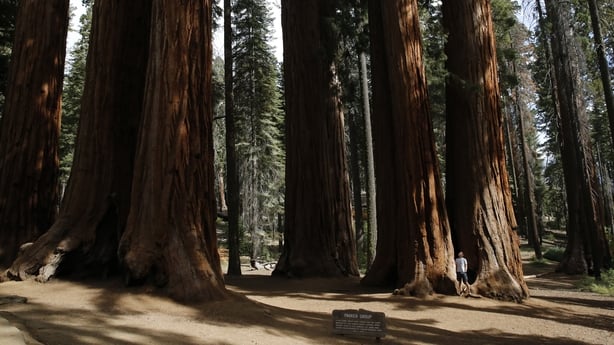The world’s largest trees have been wrapped in fire-resistant blankets in an effort to protect them from the massive fires that have ravaged the drought-stricken western United States.
A grove of ancient sequoias, including the 275-foot General Sherman tree—the largest in the world—will get aluminum cladding to repel the flames.
Incident leaders said firefighters are also removing brush and pre-engines among 2,000 old trees in California’s Sequoia National Park.
«They are taking extraordinary measures to protect these trees,» said Kristi Brigham, director of parks resources, according to the Mercury News.
«We really want to do everything we can to protect these 2,000 and 3,000-year-old trees.»
Millions of acres of California forests have burned in this year’s wildfire season.
Scientists say man-made global warming is behind years of drought and high temperatures that have made the region highly vulnerable to wildfires.
Two fires are currently looming in the park’s giant forest, which is home to five of the world’s largest trees, including General Sherman.

About 500 individuals have been involved in fighting the Paradise Fire and the Colony’s Fire, which together have already consumed 9,365 acres of forest since it broke out from lightning strikes on September 10.
The gigantic trees of the Giant Forest are a huge tourist attraction, with visitors traveling from all over the world to enjoy their majestic height and exceptional size.
While they are not the tallest trees—California red trees can grow to over 300 feet—giant sequoia trees are by far the largest.
Small fires generally do not harm the sequoia, which is protected by thick bark, already helping it to reproduce; The heat they generate opens the cones to release the seeds.
But the largest and hottest waste fires in the western United States pose a danger to them as they climb up tree trunks and into the canopy.

«Lector profesional. Jugador galardonado. Aficionado a los zombis. Adicto a las redes sociales. Experto en tocino. Erudito en Internet»